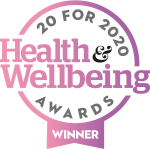Do you, or someone you love, have any of the following symptoms?
- feeling very tired
- cuts or wounds taking longer to heal
- feeling thirsty all the time
- urinating more than usual, particularly at night
- losing weight without trying to
- genital itching or repeated cases of thrush
- blurred vision
These symptoms can be signs of type 2 diabetes. There are currently 3.9 million people living with a diagnosis of diabetes in the UK, and 90% of those are type 2.
Almost one million more people in the UK have type 2 diabetes and don’t know it yet, bringing the total to 4.8 million.
Cases of diabetes diagnoses have doubled in the last 15 years. At this rate researchers predict that the total number of people with diabetes will rise to 5.3 million by 2025.1
But there is hope! Type 2 diabetes is firmly linked with the health of your gut microbiome. According to the World Journal of Diabetes, “It appears that the human oral and gut microbiota are deeply interdigitated with diabetes. It is that simple.”2 And as a member of the CG tribe, you know that gut health is something that can be improved by the lifestyle choices you make.
How does this work?
Imagine that your journey from health to diabetes is like a road that winds through a range of different landscapes. Some areas are green and luxuriant, some are dry and barren due to environmental pressures. The latest microbiome science tells us that the more lush and diverse your gut ecosystem, the better you’ll control your blood sugar.3
Inside your gut, these negative environmental pressures are produced by the food you eat. Highly processed carbohydrates, sugar-sweetened drinks and trans fats can damage your internal landscape and increase your risk of type 2 diabetes.4
One of the bacteria known to help regulate blood sugar is Christensenella. Clinical studies from around the world confirm a link between Christensenella and obesity. In fact, people with healthy levels of Christensenella tend to be leaner. They are also less likely have other metabolic complications such as high cholesterol / triglycerides.5, 6
While this is great news, it is not just all about Christensenella. Microbes tend to be part of clusters of both beneficial and detrimental bugs. Christensenella appears as part of groups of microbes that include Faecalibacterium and Roseburia, beneficial butyrate-producers that also help protect your gut health.7
Other groups of microbes can actually increase your risk of type 2 diabetes. One such group includes Clostridium citroniae, Clostridium bolteae and Tyzzerella nexilis.8 This is a cluster to watch out for. Why? Because a study just published in the Journal of the American Diabetes Association confirms that they have a negative effect on your ability to regulate blood sugar.9
The takeaway for us? Gut microbiome tests help us understand our gastrointestinal landscape. By getting to know our gut ecosystem better, we can make health-boosting decisions.
How can you reduce your chances of diabetes? Try these three things:
- Drink kefir. Why? Because clinical studies tell us it benefits blood sugar control by reducing both insulin and fasting blood sugar levels.10
- Keep your diet varied. We all know about the benefits of fruit, vegetables, whole grains, nuts and seeds. But diversity is key when the goal is to reduce risk of type 2 diabetes and its complications.11 The top tip here is to try to add new products to your shopping basket. Be adventurous with your sources of fibre and antioxidants and your body will help you.
- Movement and mindfulness. Combine your diet with exercise and a daily mindfulness practice. Why? Because science tells us that it is more effective in the long run than focusing on food alone.12 Want a simple hack? Stop and breathe in and out with your eyes closed for 1 minute before you start to eat your meals. Focus on feelings of gratitude about the meal you’re about to have. This switches off the “fight or flight” mode we tend to be in most of the time. The best bit? It switches on the “rest and repair” mode. This makes you more effective at digesting and absorbing nutrients in your food.13
If you have any of the symptoms of type 2 diabetes, or you’re worried you may be at risk, go and see your GP. He or she can diagnose diabetes with a blood test. The earlier diabetes is diagnosed and treatment started, the better. Early treatment reduces your risk of other health problems.















